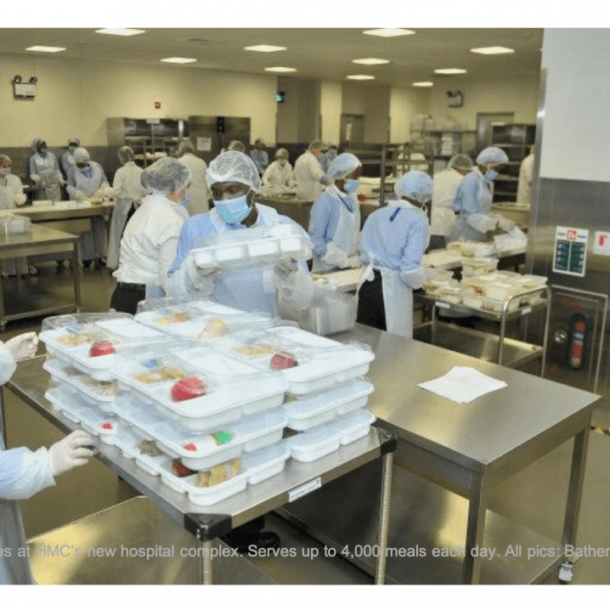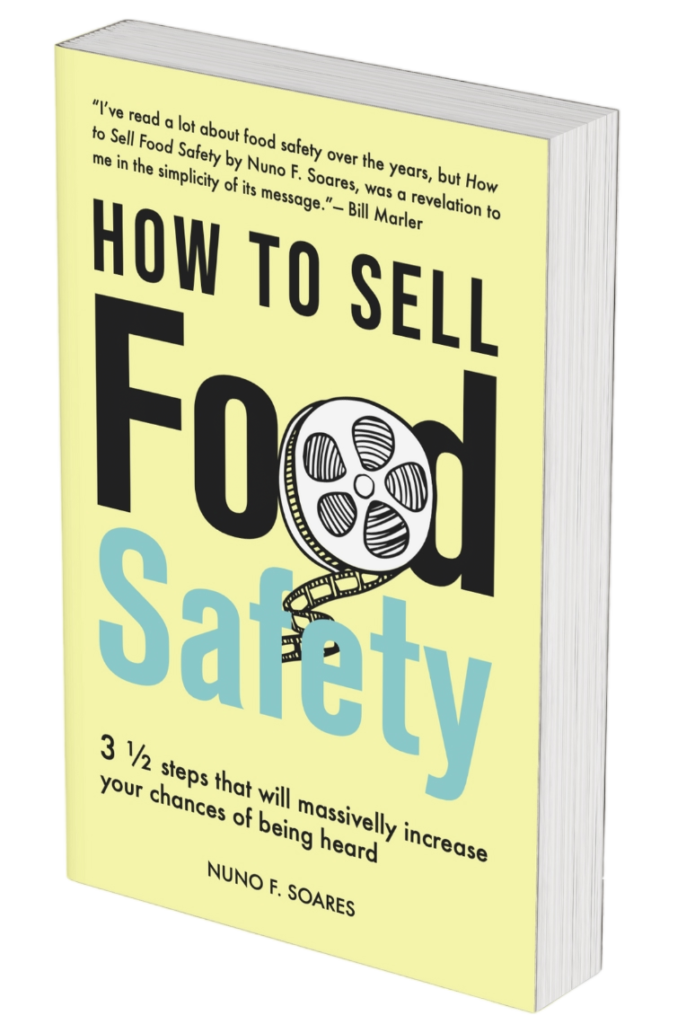
Food Sanitation is an everyday job to avoid food contamination. No one and nothing should be left behind and all functions and operations must be involved in sanitation. This commitment is vital to prevent foodborne illnesses, control pathogens (e.g. Listeria monocytogenes), control normal spoilage bacteria, meet customer expectations and comply with regulatory requirements.
In 2005, the butcher shop John Tudor and Son originated 157 cases and 1 death, because of the presence of E. coli O157:H7 in deli meats. The inspection of the butcher shop revealed cross contamination potential, lack of attention to cleanliness and falsification of safety records.
In 2010, as a result of numerous sanitation and temperature control problems, Sangar Fresh Cut Produce induced 10 cases of listeriosis, after ingestion of chicken salad and prepackaged, diced celery only. Five people deceased in consequence of this incidence. All Sangar products were recalled as it seemed likely that other fresh vegetable products would have become contaminated.
The contamination of whipped cream caused, in 2014, 11 cases of Salmonella enteritidis in Cheesecake Factory. A problem with cleaning and sanitizing the whipped cream machine was observed, since it was rinsed each night but the sanitization was not happening.
It has been reported that poor sanitation can be responsible for 35% of the foodborne illness cases, of which 19% by poor personnel hygiene and 16% by contaminated equipment/environment. Thus, a good sanitation program will give rise to a reduction in the probability of incidences or recalls and to higher productivity.
A. The Sanitation House
On the basis of effective sanitation are the people, and how to motivate them to the process is particularly important. Most organizations across the globe do not have a dedicated team to sanitize the facilities and therefore sanitizing is often seen as an extra activity commonly done at the end of the day or shift. Even in the cases where a special team is assembled for sanitizing, this kind of work if often low valued by the workers and management. The only way to motivate them is to clearly present the higher purpose: Food Safety. Guaranteeing food safety is a team work where cleaning staff plays a decisive role.
Then, a Sanitation Program must lay on two pillars: Sanitation Assessment and Cleaning Procedures. Firstly, organizations should assess the sanitation needs. Based on the products, processes and equipment’s’ characteristics, identify the type of soils mostly present, that need to be clean, and what are the appropriate chemicals to do it. With that in mind, food safety professionals can develop cleaning procedures to describe how often the facilities/equipment should be cleaned, by whom, with what kind of chemicals (alkali, acids, …) and how to do it (step-by-step). These two documents can be put together in a Sanitation Program for the entire facilities.
Only after all these reflections (and not at the beginning, as so often happens) organizations should go buying the tools (including protective gear for chemicals handling and cleaning) and chemicals to implement effective sanitation.
B. The sixes steps of sanitation
The following steps are basic procedures for effective cleaning and sanitizing. Each step in the process depends on effective completion of the prior step.
Dry clean:
a) Remove/scrape debris from floor and surfaces (loose bulk soils, paper, packaging, …)
b) Disassemble equipment and/or open equipment panels to clean inside
c) Protect equipment for the use of water
First-Rinse:
- With a warm-to-hot water rinse. Temperature between 110 °F (38 °C) to 140 °F (60 °C) is ideal to dissolve fat but not high enough to denature proteins (that would make them hard to remove from surfaces)
- Water pressure should be used wisely since high pressure will help remove dirt but also will project dirt into the air and produce contaminated aerosols
- Some mechanical scrubbing may be necessary
Visual inspection is important at this stage to ensure that debris have been properly removed from surfaces since the chemicals used in the next steps are not designed to be effective in an environment with excess soils or gross contamination.
Detail clean:
- Have detergents pre-prepared in the correct concentration
- Wash all equipment and environmental surfaces using the appropriate detergent (defined in the cleaning procedures). Consider water temperature and pressure as presented in the previous point
- Respect the contact time necessary for the chemical to break up soil (as suggested by product specifications or by previous cleaning validation). Excessive contact time is undesirable due to chemical drying
- Previously removed equipment parts or utensils should be washed in a separate area
- Mechanical action and scrubbing should be used to improve detergent efficiency and prevent biofilm formation
- Cleaning belts may require slowing down its speed to assure proper cleaning. Conveyor guides and belts underside should be also included in the cleaning procedures
Second-Rinse:
- Rinse all surfaces with clean water to remove suspended soils. Temperatures around 110 °F (38 °C) to 140 °F (60 °C) are recommended
- Contact surfaces should be the last surfaces to be rinsed
- Consider training cleaning staff to use ATP swabs as self-assessment of the first 4 steps
- Resemble equipment parts
Inspection step:
- Most of the inspection efforts should be done in this step since if the 4 previous steps are not done correctly, sanitizers will not be effective. Furthermore, if the inspection is only done after sanitizing and considered insufficient, it would be a waste of time and money since reclean will be mandatory
- Done by trained personnel (someone in charge and responsible for the cleaning staff). Documented evidences of inspection should be kept
Application of sanitizer:
- Be aware of sanitizer concentration and contact time requirements
- Use adequate water temperature and pressure
Alcohol-based sanitizer is an option when drying quickly is important
C. Cleaning tools and equipment
Central cleaning systems with main stations, pump units and satellite stations spread by the facilities with dosing units to dispense chemicals accurately and maintain concentration (by measuring conductivity) are good solutions, for larger production areas. Some systems use the same hose for cleaning, rising and introducing sanitizer. Mobile cleaning systems can be interesting, since it reduces costs, particularly for smaller plants. Hoses must be made of appropriate material (easy to clean and able to handle temperature and pressure).
Vacuum and floor cleaners are also currently used, particularly where none or small amount of water can be used to clean the floor.
Tools like scrubbers, brushes, scrapers, dustpans, etc. should be made of materials that can contact food or food-contact surfaces. Suppliers should provide documentation to guarantee compliance with the law. Technical data sheet can also have additional and important information regarding the product and should be read and kept. One great solution available for the correct use of cleaning tools is storing it on “cleaning stations”. A set of tools defined for a specific machine or plant area (and only those) can be hold on the station in a designated area. This visual aid will make clear to the cleaning staff what tools should be used at that moment or place (even reinforced by the use of different colours for different areas or machines). These stations can be mobile allowing the easy transport of tools into the place to clean.
D. Training
As for any of the food safety activities cleaning and sanitation requires that the people in charge of these procedures have proper knowledge and training. In its absence, the probability of improper sanitation or even contamination of food products increases exponentially. If people, besides being motivated, have not acquired the skills and competence to perform cleaning and sanitation activities, the whole Sanitation House crumbles and falls apart. Find below some of the most important training topics.
It takes time, patience and money to train cleaning staff but be sure that on the end of the line you may be avoiding other much higher costs like production halts (since cleaning is the first step for a good equipment maintenance), complaints, compromising product organoleptic and safety characteristics (like shelf-life), recalls and diminishing staff morale (who likes to work on a poorly clean environment?!).
E. The future
Cleaning and sanitation faces many challenges into the future and food safety professionals have to be always updated and searching for new ways to win the battle against contamination. In this regard we would like to share one new antimicrobial, Silver Dihydrogen Citrate (SDC), and a new technology to access contamination in food safety facilities – 16S Metagenomics.
SDC is a very stable silver based-disinfectant that kills microorganisms by membrane deactivation or DNA denaturation. SDC is not-toxic for humans and animals, is colourless, odourless and does not produce toxic fumes. Other great characteristic of this product is that rinsing is not required after disinfection.
Regarding 16S Metagenomics is a technique within DNA sequencing to identify all the bacteria in samples. With this solution organizations can have raw-materials, environmental swaps, and final products samples analyze and know all the bacteria present and its relative abundance in each samples (instead of a single microorganism provided by traditional isolation methods).
Knowing the complete profile of facilities and identifying how this profiles changes within the facility, process, product or time is an opportunity for food safety practitioners understand much better what is happening in their facilities and how to prepare effective sanitation plans.








